Related Publications
Related Publications
The Dynamism of Japanese Household Behavior
These are annual research reports based on the KHPS survey results for each year. The reports include each year’s survey questionnaires, simple tabulation tables, and survey findings regarding the data characteristics, as well as research papers and articles analyzing each year’s data.
<Most Recent Year’s Volume>
The Dynamism of Japanese Household Behavior IX – Market Quality from The View Point of Household Panel Survey
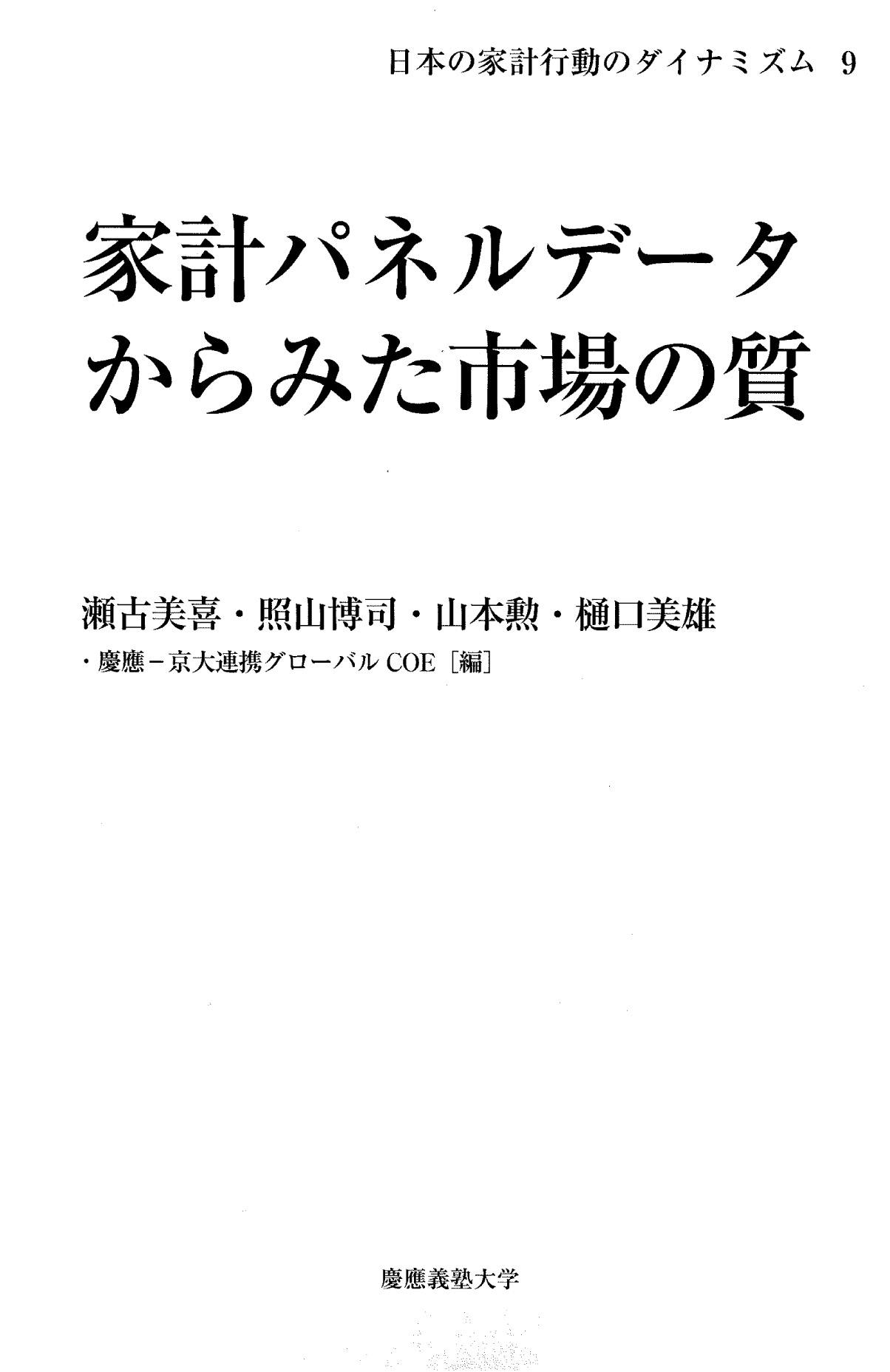 |
Miki Seko, Hiroshi Teruyama, Isamu Yamamoto, Yoshio Higuchi and Keio/Kyoto Joint Global COE (eds.)
|
Introduction of Contents
Clarifying the Structure of Household Behaviors.
Using the Keio Household Panel Survey (KHPS) that has conducted follow-up surveys of the same households since 2004, we clarify the dynamic behaviors of Japanese households in various marketsover recent years.
This book includes two chapters summarizing and verifying KHPS 2012 and the additional samples; four chapters mainly analyzing the conditions of Japanese households in terms of working, household chores, and marriage; three chapters analyzing childbirth, child-raising, and working; and two chapters on the KHPS and the “the Great East Japan Earthquake Special Survey” conducted in 2011, which has been used in various analyses.
This book clarifies the structure of Japanese household behaviors and also of changes in the household behaviors of those who have experienced shocks or changes in their environment. In this way, it contributes to a higher-quality policy debate.
<Prior Year’s Volume>
The Dynamism of Japanese Household Behavior Ⅷ – Effect of the Great East Japan Earthquake on Households
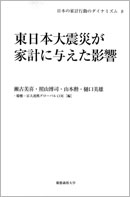 |
Miki Seko, Hiroshi Teruyama, Isamu Yamamoto, Yoshio Higuchi and Keio/Kyoto Joint Global COE (eds.)
|
Introduction of Contents
This volume examines in detail how household behavior changed after the earthquake.
This volume presents the research results from the eighth year of the Keio Household Panel Survey (KHPS), which uses large-scale panel data to follow and analyze changes in human awareness and lifestyles.
As part of the KHPS, to assess how households were affected by the March 2011 Great East-Japan Earthquake, a follow-up survey, the “the Great East-Japan Earthquake Special Survey,” were conducted in June and October to investigate household psychological status and behavior after the earthquake. We were able to see in detail the differences between before and after the earthquake. This volume contains ten chapters regarding the earthquake. They include chapters on the effect of the earthquake on employment behavior and the effect of anxiety on shopping behavior. There are empirical analyses of issues such as earthquake insurance and household consumption after the earthquake, and information on the effects of the earthquake in terms of psychological cost and feelings of happiness. One chapter gives details of the research compiled by using the KHPS. This volume will help to prepare recovery plans and expand the use of reconstruction and disaster-prevention measures.
The Dynamism of Japanese Household Behavior Ⅶ – Household Behavior after the Economic Crisis
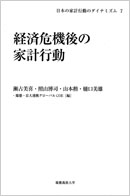 |
Miki Seko, Hiroshi Teruyama, Isamu Yamamoto, Yoshio Higuchi and Keio/Kyoto Joint Global COE (eds.)
|
Introduction of Contents
This volume is the seventh to present the results of the Keio Household Survey.
How were households affected by the Economic Crisis caused by the bankruptcy of Lehman Brothers in September 2008, and how did they change? This volume gives a multi-faceted analysis of household behavior after the Economic Crisis.
The volume presents the results from the seventh year of the Keio Household Panel Survey (KHPS), which was taken over by the Keio/Kyoto Joint Global COE Program from the 21st Century COE Program at Keio University. Data accumulation has entered its seventh year: the distinctive characteristics of the panel data are therefore able to be clearly demonstrated.
The Dynamism of Japanese Household Behavior VI – Changes in Household Behavior under the Economic Crisis
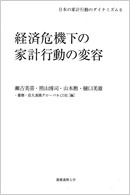 |
Miki Seko, Hiroshi Teruyama, Isamu Yamamoto, Yoshio Higuchi and Keio/Kyoto Joint Global COE (eds.)
|
Introduction of Contents
Depicting the conditions of non-regular employment, unemployment and job-changing
With the global economic crisis, employment anxiety spread throughout Japan. What types of households were affected? How were they affected, and how did they respond? Moreover, have market efficiency and fairness been maintained? This volume presents multi-faceted analyses following individual households using detailed panel data through the latest survey in January 2009. The dynamic household behavior analyses are based on six years of Keio Household Panel Survey (KHPS) results.
The Dynamism of Japanese Household Behavior V – Labor Market Quality Improvement and Employment Behavior
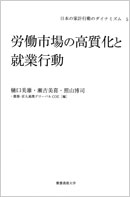 |
Yoshio Higuchi, Miki Seko, Hiroshi Teruyama and Keio/Kyoto Joint Global COE (eds.)
|
Introduction of Contents
The quality of Japan’s labor market is declining!
This volume uses detailed data to depict labor market conditions including the decrease in regular employment and increase in non-regular employment, youth who cannot escape non-regular employment, the long working hours and mental health problems of regular employees, and the expanding mismatch between labor supply and demand by region, occupation and age. This volume also includes policy proposals for raising the quality of the labor market. The dynamic household behavior analyses are based on five years of Keio Household Panel Survey (KHPS) results.
The Dynamism of Household Behavior in Japan IV: Change of Institutional Policy and Employment Behavior
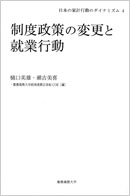 |
Yoshio Higuchi/Miki Seko/the COE program at Keio University (eds.)
|
Introduction of Contents
Have the employment patterns of women and elderly people changed?
Law concerning Childcare and Caring Leave, Law concerning Stabilization of Employment of Older Persons, and Labor Standards Law were revised successively, while temporary tax cuts on income tax and home buyers’ tax breaks were reduced or curtailed. This volume conducts an empirical analysis on the relationship between these system reforms and the change in the employment behavior of women and the elderly.
This is the fourth volume that transmits the results of the KHPS that follow and analyze changes in human awareness and living using a large-scale panel data.
The Dynamism of Household Behavior in Japan III: Realities, Factors, and Effects of Mobility of Economic Disparity
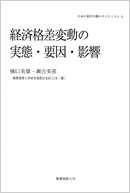 |
Yoshio Higuchi/Miki Seko/the COE program at Keio University (eds.)
|
Introduction of Contents
This volume warns about the expanding disparity and immobilization of poverty. It multilaterally analyzes income and wages, working and living hours, human assets such as education and health, intergenerational transfer of donation, inheritance and economic assistance, and interregional disparity in the Japanese society. It discusses the current trends in Japan.
The Dynamism of Household Behavior in Japan II: Taxation Reform and Response of Households
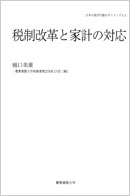 |
Yoshio Higuchi, the COE program at Keio University (eds.)
|
Introduction of Contents
This volume examines how taxation reforms will change our lives. It clarifies the changes in the consumption and employment behavior of people in association with the changes in the taxation process and laws through the discussions on the introduction of the system to carry over transfer loss, further reduction of living inheritance expenditures, improvement of childcare leave and childcare facilities, partial abolition of special spousal exemption, review of fixed-amount reduction of income tax, cigarette tax hike, and Home Appliance Recycling Law.
The Dynamism of Household Behavior in Japan I: Characteristics of Keio Household Panel Survey and Analysis of Housing, Employment, and Wage
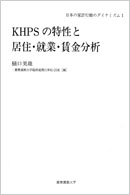 |
Yoshio Higuchi, the COE program at Keio University (eds.)
|
Introduction of Contents
This volume analyzes household behavior using a large-scale panel survey of 4,000 households across the country (7,000 people). It defines the Japanese economy by describing the transformation of Japanese households. It clarifies the realities of people’s way of working and living, such as effects of the leasehold system, home-purchase and wives’ employment, job-hoppers and their employment, marriage and childbirth, effects of career change on young people, IT skills and wage, and relationship between bonus and savings.
Related Publications
Reports
The following are reports that use data from the KHPS conducted in the Global COE program at Keio University.
2007
・Seko, Miki, and Kazuto Sumita (2007), "Effects of Government Policies on Residential Mobility in Japan: Income Tax Deduction System and the Rental Act," Journal of Housing Economics, 16(2), pp.167-188.
・Seko, Miki, and Kazuto Sumita (2007), "Japanese Housing Tenure Choice and Welfare Implications After the Revision of the Tenant Protection Law," Journal of Real Estate Finance and Economics, 35(3), pp.357-383.
・Miyoshi, Koyo (2007), "Male-Female Wage Differentials in Japan," Japan and the World Economy, in press.
・Naoi, Michio, Kazuto Sumita, and Miki Seko (2007), "Earthquakes and the Quality of Life in Japan," Journal of Property Research, 24(4), pp.313-334. (European Real Estate Society/Journal of Property Research Prize Paper, Best Paper in Real Estate Economics).
・Tsukahara, Ichiro (2007), "The Effect of Family Background on Occupational Choice," Labour, 21(4-5), pp.871-890.
2008
・Naoi, Michio(2008), "Residential Mobility and Panel Attrition: Using the Interview Process As Identifying Instruments," Keio Economic Studies, 44(1), in press.
2009
・Naoi, Michio, Miki Seko, and Kazuto Sumita (2009), "Earthquake Risk and Housing Prices in Japan: Evidence Before and After Massive Earthquakes," Regional Science and Urban Economics, Vol.39(6), pp.658-669, 2009, KESDP No.09-2, 2009).
2010
・Naoi, Michio, Kazuto Sumita, and Miki Seko (2010), "Estimating Consumer's Valuation of Earthquake Risk: Evidence from Japanese Housing Markets,"International Real Estate Review, Vol.13, No.2, pp.117-133, 2010.
・Naoi, Michio, Miki Seko, and Kazuto Sumita (2010), "Community Rating, Cross Subsidies and Underinsurance: Why So Many Households in Japan Do Not Purchase Earthquake Insurance? ," Journal of Real Estate Finance and Economics, 40(4), pp.544-561, 2010, (KESDP No.09-1, 2009.)
2011
・Seko, Miki, Kazuto Sumita, and Michio Naoi (2011), "Residential Mobility Decision in Japan: Effects of Housing Equity Constraints and Income Shocks under the Recourse Loan System,"Journal of Real Estate Finance and Economics, forthcoming.